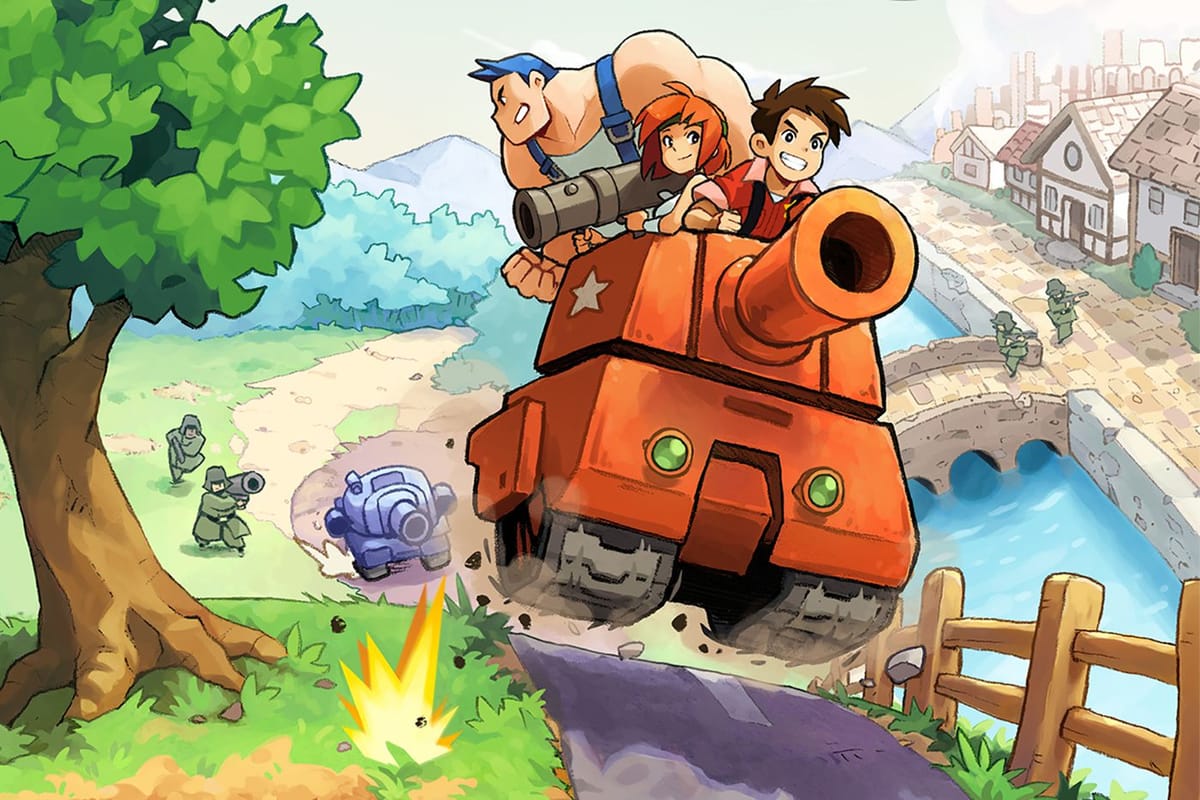Advancement Wars
Does campaign play necessitate character advancement, and are Oddlikes really at a disadvantage?

I was inspired to write this upon only just reading a post from noisms, written earlier this year, on Against Being 'Rules Light' and What 'Minimalism' Really Means. The comments had some excellent input from Tom van Winkle and dansumption, sadly soured by some toxicity they faced. The importance of further interrogating the term 'rules light' was highlighted, and a good reference by diegesis was linked on rules light vs rules sparse vs rules simple.
One of the deeper divides in the vernacular fantasy roleplaying hobby is whether ‘rules light’ or 'minimalist' games are only good for one-to-few shot games, or if they can sustain extended campaign play. The primary concern relates to their eschewing of detailed character advancement mechanics, with the alternative (implicit or explicit) being ‘foreground growth’ (often also term diegetic advancement), held to be inferior or insufficient for long-term play. I find this contention stuff and nonsense, and will here outline my case.
It is usually not contested that any version of D&D is sufficiently pregnant with prescribed advancement mechanics for campaign play, and it handily wins the popular vote, so will be the baseline game for comparison. Henceforth read D&D as relating to the common spectrum of mechanics shared amongst the early versions of the game (OD&D and supplements, B/X).
I'll contrast this to the Oddlikes (Into the Odd and Electric Bastionland by Chris McDowall, Cairn by Yochai Gal, Mausritter by Isaac Williams et cetera) as they are currently the most popular games routinely levelled with this accusation of being too vapid and insipid for campaign play, though as we shall see, the advancement wars have waged since the earliest years of the hobby.
What is character advancement?
We will first focus on mechanical character advancement, and then come to fictional character advancement, as though related, these concepts are extricable. Conflation of these is one of the prime drivers of confusion in this debate.
Original D&D (1974) emerged from wargaming roots, and from its published inception a player's character was assigned a level and number of hit dice (HD) to determine hit points (HP) that would define their resilience and capability in combat. These values would start low (usually level 1 with 1 HD and d6 HP) and gradually escalate over play for earning experience points (XP), which was mostly awarded for extracting gold and treasure from adventure locales. Tom Van Winkle persuasively argues the link between these mechanisms and the preceding war game Chainmail, yet also revealing even in those nascent years there was dissent regarding the fictional implications of inflating HP totals.
Alternatives were explored early: Dave Arneson wrote that he instead used escalating chances to defend or save against attacks with fairly fixed HP totals, and several early games had little to no escalation in character attributes or HP: Traveller (1977), RuneQuest (1978), The Fantasy Trip (1980), Fighting Fantasy (1982). A common element to these games is that characters would progress by obtaining goals within the fiction, acquire wealth or other material resources, make discoveries and raise their social standing and capital. These games and their mechanical descendants are still discussed and played today, attesting to their capacity for sustained campaigning, yet are mechanically more similar to the Oddlikes regarding advancement mechanics.
We will now consider a few facets of character advancement in turn, comparing how they might be effected in each system.
Combat advancement
Starting with combat capability, as that is usually (though often implicitly) what people are most concerned with regarding character advancement. As explained in the primer Muster by Eero Tuovinen, D&D scaling of damage compared to HP from low to high level is logarithmic: roughly one hit drops a first level character, two hits drop a fourth level, and three hits drop a ninth level. This affords escalating 'luck' or 'protagonist armour' to characters as they advance (hence why you might call HP 'heroic protection' instead). Escalating to-hit bonuses only contribute a relative ~25% relative damage increase from first to ninth level, and is generally dwarfed by the rise in HP.
Oddlikes actually follow a similar progression, with basic d6 weapon damage and a starting d6 HP (~3) that increases towards 3d6 HP (~10) through play rewards (including scars). Hence a trajectory from one hit to three hits to be at risk of critical damage, let alone the potential to increase STR as well to further weather more hits. Notably, baseline weapon damage doesn't increase at all (excepting magic items, covered below). The 'ganging up' rule from Electric Bastionland (only the single highest damage roll is retained each round) further helps to differentiate the high-HP combatant, as even a mob of low-powered assailants can't easily overcome their improved resilience.
The relative maths of damage to total HP is similar between games, just compressed into fewer digits in the Oddlikes.
Ability & skill advancement
Both D&D and Oddlikes eschew a discrete skill system, with the latter using a uniform d20 roll-equal-or-under one of the ability scores (determined at character creation by 3d6). D&D might do the same, or roll X-in-6, or adapt the reaction roll (2d6), or something else. Both games do not have these chances change predictably with levelling up, instead providing the mechanisms of magic items or in-world effects modifying stats (and the scars system in Oddlikes).
There are certainly arguments to be made about the merits of this fairly static approach compared to the other D&D mechanic of saving throws that start at ~25% chance of success and with levelling reach ~50-75%, but in both games the aim of play is to mitigate the need to roll at all, and I contend the real impact on play of these difference in odds is less than usually made out.
Magic items & spellcasting
Both D&D and Oddlikes provide characters with magic items with additional combat and non-combat utility. It is not feasible to make an apples-to-apples comparison in this space, but subjectively I can see no fundamental difference in their approaches or capacity to imbue meaningful progression that affords agency and potency to the characters.
Spellcasting is deliberately absent in the originating Into the Odd / Electric Bastionland (it's role fully subsumed by magic items), but spellcasting is commonly added in to the other Oddlikes. This is perhaps the only area I must concede there is an appreciable difference: D&D lists up to six ranks of spells of escalating power to learn, whereas Cairn and Mausritter provide only a set of effectively first rank spells suitable for starting characters. This is clearly a deliberate attempt to curb the disparity between martial and spell-casting characters at later levels, but if it is not to taste is easily remedied.
Provision of more powerful spells and magic items can achieve precisely the same effects to broaden the field of play, or trivialise previous obstacles, as in D&D. Into the Odd's Legendary Arcana present effects equivalent to the highest rank spells, and only an incorrigible miser would struggle in this framework.
Bespoke boons
When mechanisms for foreground character growth are brought up regarding Oddlikes, this is the most commonly cited form, but I wanted to leave it to last as it is somewhat a red-herring. A temporary or permanent boon afforded to a character during play that arises separately to a 'character build,' such as a gift from a deity or a transformation by a monster, is not the sole preserve of Oddlikes. Classic D&D adventures like I6 Ravenloft (1E) show a panoply of such on-the-job-advancement opportunities, and anecdotally were common enough from the earliest years of the hobby.
There is perhaps a general sentiment that when a game specifies "you may read spells from magic user scrolls from 9th-level" that is somehow more legitimate than that same ability being granted through play from some in-world source. If you share this feeling, I won't presently argue the case, but I would invite some quiet reflection on your philosophy of roleplaying. I am reminded of Zedeck Siew's rebuke of D&D taxonomy: why are we compelled to delineate character advancement with such sterility, to draw the map so precisely we should feel as though we have already made the journey, when we could instead more fully embrace the ideas of playing the world and playing to find out what happens.
Tiers of play
Classically, early levels (say 1-3) are focussed on dungeon crawling. Then mid levels (4-6) are wilderness exploration, and high levels (7-9+) open up into domain play. The prime drivers of this changing theatre are the accumulation of HP, wealth, magical powers, and implied social standing. The personal ramifications of 'liberating' piles of recognised coinage and valuables from adventure sites should need only suggestive outlining: all players come to the game burdened with knowledge of the opportunity and advantage that wealth provides in our societies.
There is nothing inherent to D&D that makes it more germane to this progression than the Oddlikes, with each providing support for hiring supporting characters and investing in businesses and buying or building fortifications (though the Oddlikes do so in their usually terse manner). D&D very loosely mechanises a rising social standing by its level titles and demarcation of a name level, while Into the Odd similarly ascribes titles to experience levels. Neither provides a complete treatment of domain play, but that ephemeral goal has eluded many, so I won't dwell further.
It seems critical for longer campaigns to accrete a rich web of powerful people and organisations, allies and enemies, intrigues and machinations, and everything else that reifies this other world. None of this requires, nor is inherently supported, by the rules of character advancement - they reflect the sophistication of play brought to the table by all participants.
Closing remarks
This brief survey has outlined how there are no fundamental differences in the affordances from character advancement for rewarding long-term campaign play in either D&D or Oddlikes. The class and level structure of D&D makes the process slightly more explicit and perhaps foolproof, yet it trades-off flexibility and emergent character growth that means groups are less empowered to explore the different tiers of play at their own pace. Character advancement in Oddlikes is more wild-and-wooly, yet that supports a certain spirit of adventure and careful risk-taking that is a key agenda of fantasy adventure gaming.
I must conclude that if rewarding long-form play in these systems remains elusive, it can only be due to a failure of imagination.
What are your thoughts on rules support for long-form campaign play? Do you feel that D&D's class-and-level advancement still has the edge over other designs? I'd love to engage in some robust discussion on the topic!




